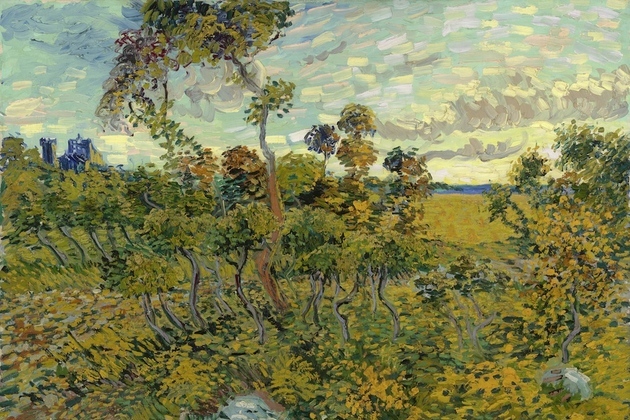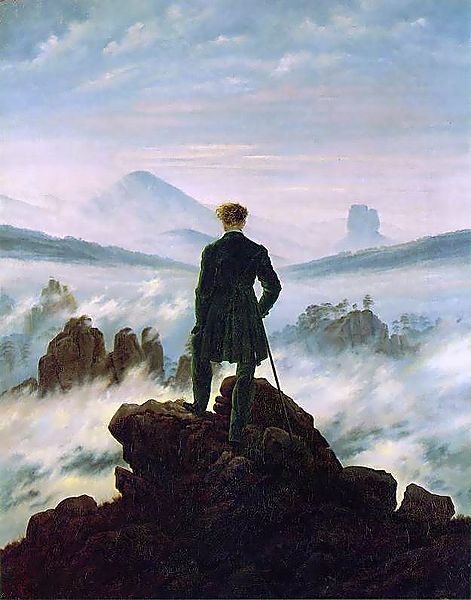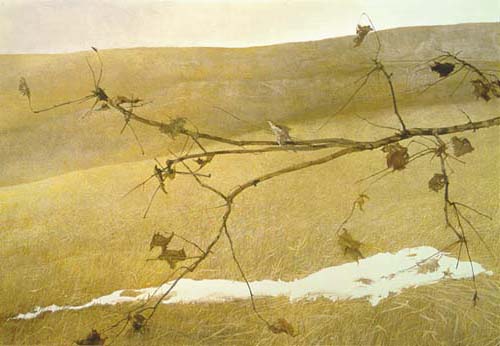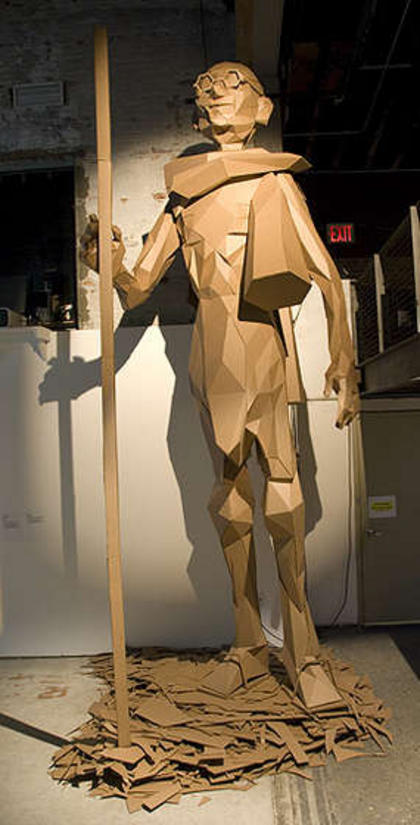Yes, that’s not a hoax, it’s true.
Bill Watterson was the guest artist on the comic strip Pearls before Swine the last 3 days. Here are links to the 3 strips:
Yes, that’s not a hoax, it’s true.
Bill Watterson was the guest artist on the comic strip Pearls before Swine the last 3 days. Here are links to the 3 strips:
One of my friends pointed this out and now I just can’t stop seeing it:

The above painting, the Sunset at Montmajour, is now confirmed to be an authentic Van Gogh painting by the experts at the Van Gogh museum in Amsterdam.
Pay attention to that upper left corner. Here’s a closeup:
look familiar? 🙂 Okay, obviously the significance of the upper left corner is open to debate, but for any Whovian it will immediately recall:

I also would like to point out that Montmajour appears to have been painted during the “sunflowers” period of Van Gogh’s career, which is right around when he was visited by The Doctor and Amy. Just saying.
The Van Gogh episode is right up there with Blink as my favorite Who episodes of all time. As an aside, the actor who played Van Gogh, Tony Curran, is now playing the awesome character of Datak Tarr on Syfy’s new TV-show/MMORPG Defiance. Well worth your time for his performance alone.
I admit that I hadn’t consciously noticed the trend of how every Hollywood movie seems to be going for a two-tone palette nowadays, but this eye-opening piece lays it out in irrefutable detail:
You see, flesh tones exist mostly in the orange range and when you look to the opposite end of the color wheel from that, where does one land? Why looky here, we have our old friend Mr. Teal. And anyone who has ever taken color theory 101 knows that if you take two complementary colors and put them next to each other, they will “pop”, and sometimes even vibrate. So, since people (flesh-tones) exist in almost every frame of every movie ever made, what could be better than applying complementary color theory to make people seem to “pop” from the background. I mean, people are really important, aren’t they?
[…]
From this seemingly innocuous supposition was unleashed a monstrosity that would eventually lead to one of the worst films ever, and one of the worst examples of unchecked teal and orange stupidity
The screenshots are hilarious, but at the end he takes teh same principle and applies it to classic works of art, and the result is utter genius:
I’d LOVE to see someone do this for more pieces of art.
It occurs to me that our politics is similarly two-tone, carefully calibrated for maximum opposition and “pop”.
this is … amazing.
( ゜-゜)> ┬───┬ (゜-゜ )
( ゜-゜) ┬───┬ <(゜-゜ ) ( ゜-゜)> ┬───┬ (゜-゜ )
( ゜-゜) ┬───┬ <(゜-゜ ) ( ゜-゜)> ┬───┬ (゜-゜ )
( ゜-゜) ┬───┬ (゜‿゜ )
( ã‚œ.゜) ┬───┬ <(^‿^ ) ( ಠ_ಠ) ┬───┬ (^‿^ ) ( ಠ_ಠ) ┬───┬ ¯_(ツ)_/¯ (╯°益°)╯︵ â”»â”â”» (°□°╬)
It’s from the comment thread at Shamus’ latest autobiographical post. I have serious issues with that post, but that’s not really any of my business, so I’m just going to gape in awe at the ASCII art instead.
Steven is a bit harsh on Brickmuppet, who was complaining that we haven’t escaped low-earth orbit in four decades, and how that represented a betrayal of our generation’s birthright. Steven argues that the past 40 years, dominated by unequivocally successful space probes throughout the solar system and (in the case of Voyager) beyond, have been anything but a betrayal, but I think Steven misses the point.
Steven is right, that the best way to do science is via unmanned probes. You can pack more sensors and bring back more data without the need to keep a human being alive – this is just the simple reality of biology, information theory, and physics. But the space program was only partly about science, it was also about something more primal, about something that is unique to the human animal, the need to explore and understand. That indefinable wanderlust has been the subject of artistic exploration as well as physical – I think it’s best captured by Romanticist art, in particular the famous painting The Wanderer (1818) by German artist Caspar David Friedrich:

I’ll leave the meta-analysis to Wikipedia but I think anyone will recognize a familiar emotion in this work – the same emotion that makes us receptive to 2001: a Space Odyssey, or Star Trek, or even Lord of the Rings. The space program was the ultimate expression of this wanderlust because it was real – the possibility existed that we might actually follow where our imaginations have lead. All of us wanted to be an astronaut, and most of us still do. Maybe our children will yet be, one day.
I am geeked out by this – finally, formal recognition for the number pi!
An irrational number that has been calculated to more than 1 trillion digits, pi is a concept not totally foreign to today’s Washington. But in this case, the goal was to promote efforts by the National Science Foundation to improve math education in the United States, especially in the critical fourth to eighth grades.
Rounded off, pi equates to 3.14, hence the designation of March 14 as Pi Day under the resolution. Informal celebrations have been held around the country for at least 20 years, but Thursday’s 391-10 vote is the first time Congress has joined the party.
So who exactly were the ten who voted against? What are they, non-Euclideans or something?
Incidentally, one of my close friends from grad school is actually getting married today. Congratulations, Dustin and Gwen!
American artist Andrew Wyeth died last week at the age of 91. His paintings of rural American landscapes and farm life are described by most obsrvers as having a nostalgic tone, but the few of his works I have seen strike me as timeless in a sense, because these same landscapes are the ones I have been seeing in real life after having moved to Wisconsin last year. There’s a serenity and simplicity to such scenes that provokes a kind of introspection. Here’s one that struck me in particular:

Related – posts about Wyeth’s art at Art News Blog and orDover. Also, the Wikipedia entry on Wyeth is worth a read – I didn’t know that Wyeth was often referenced in Peanuts!
Is it just wrong that the first thing I thought of when I saw this was Read or Die?

Since Gandhi was a lawyer, you might argue that Gandhi did literally have to read, or die, for freedom.
A while back, I mentioned the coast-to-coast Burrito Tunnel. Now comes word of a new tunnel, the Telectroscope, connecting New York and London:
The telectroscope, a looking-glass tunnel connecting New York and London has been completed at last, over 100 years after it was abandoned. The tunnel, which starts in Brooklyn, was designed and partly executed by late 1800s inventor Alexander Stanhope St. George. A series of mirrors, cameras and a large underground tunnel, connects the two cities.
More details at the New York Times (seriously). The telectroscope goes live on June 15th. Some photos of the terminal ends in London and New York:
There’s more than meets the eye to the wheelchair, too. Wouldn’t be surprised if that were the case in real life, too – that Hawking fellow is a smart fella, I hear.